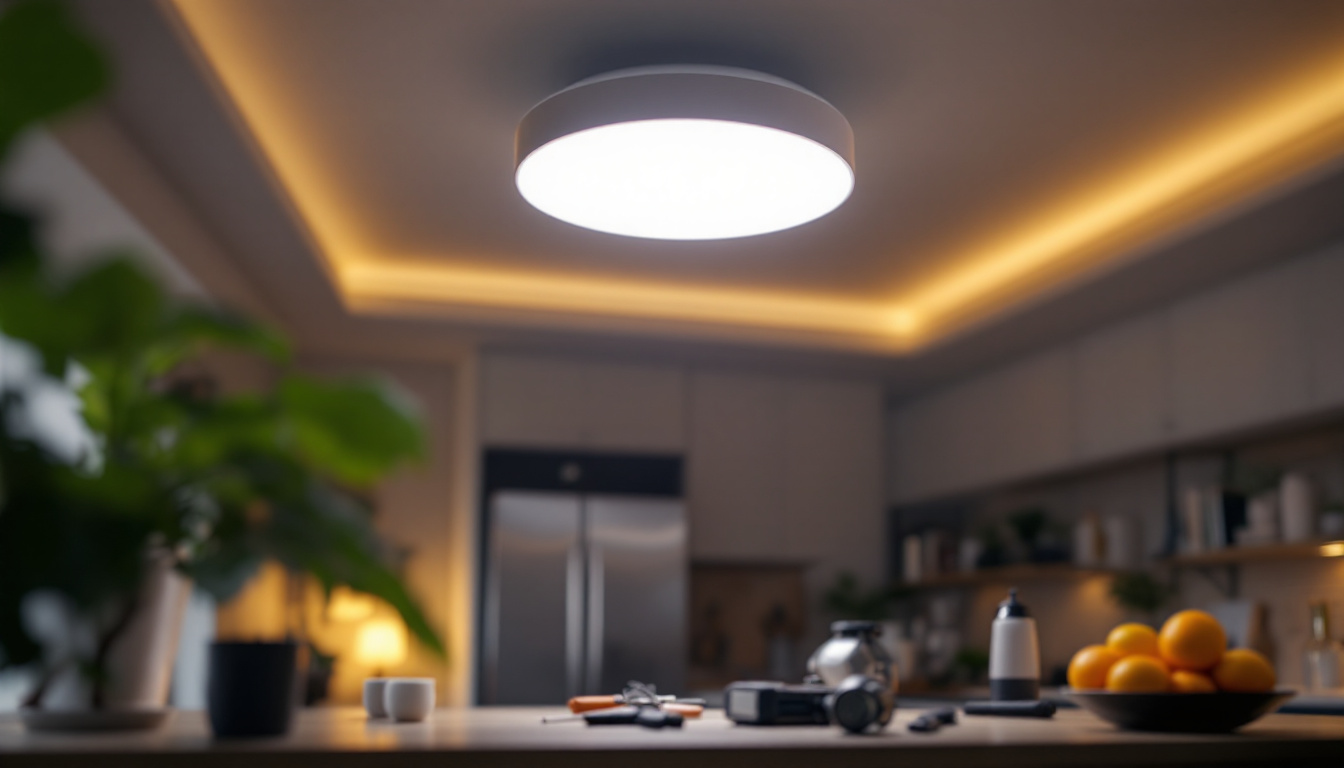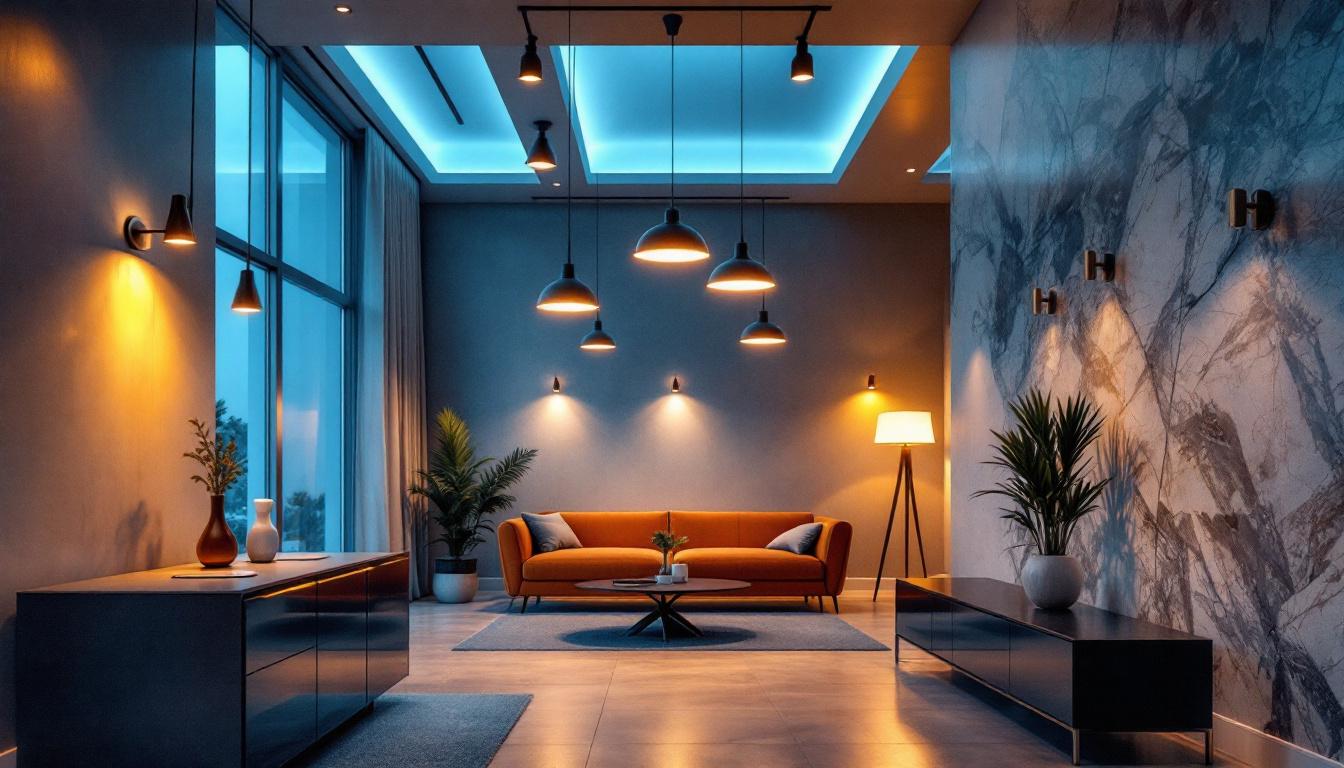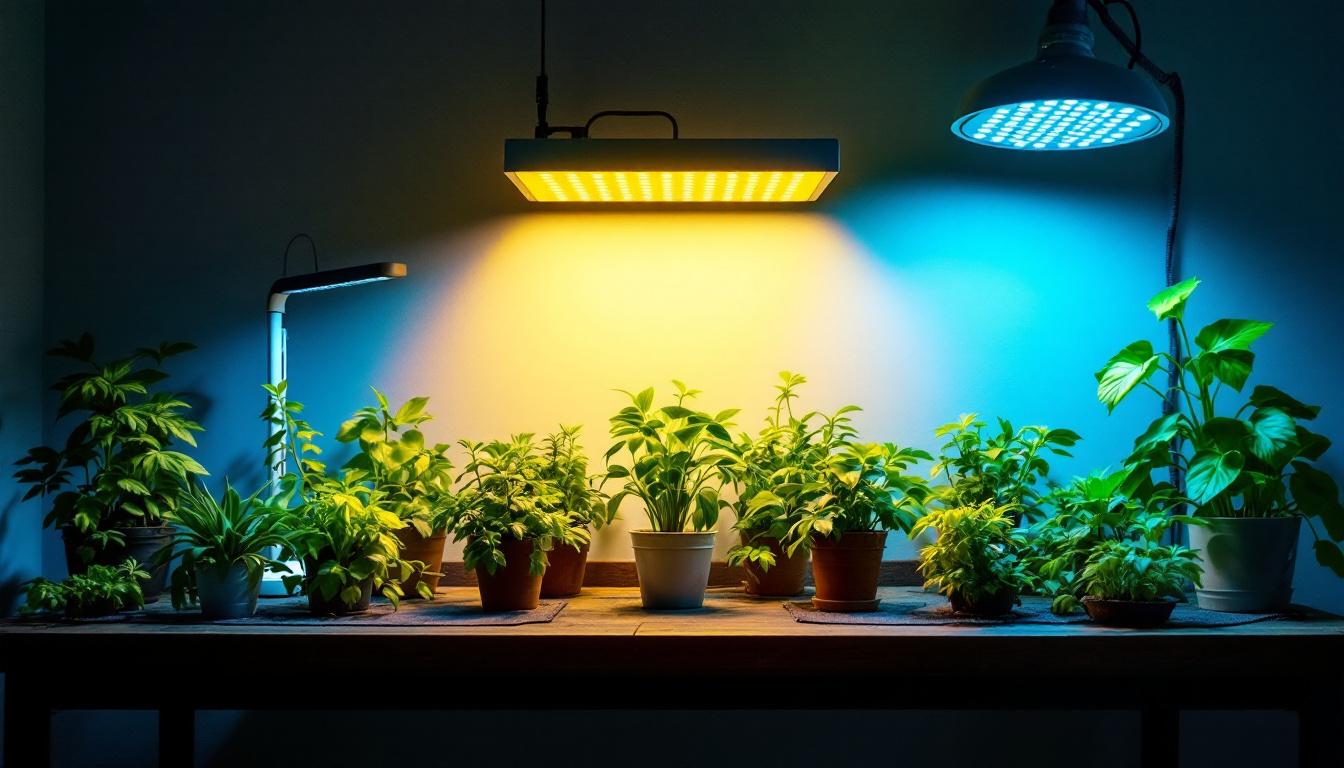
In the ever-evolving world of lighting design, LED ceiling light fixtures have emerged as a popular choice among contractors and homeowners alike. Their energy efficiency, longevity, and versatility make them an ideal solution for various applications. However, selecting the right LED ceiling light fixture requires careful consideration and planning. This article provides a comprehensive checklist tailored specifically for lighting contractors, ensuring that every project runs smoothly from start to finish.
Before diving into the specifics of selecting and installing LED ceiling light fixtures, it’s crucial to understand the technology behind them. LEDs, or Light Emitting Diodes, offer numerous advantages over traditional lighting options. They consume significantly less energy, have a longer lifespan, and produce less heat, making them a safer and more sustainable choice. Furthermore, the compact size of LEDs allows for innovative designs and applications, enabling architects and designers to explore creative lighting solutions that were previously unattainable with larger, bulkier bulbs.
One of the standout features of LED lighting is its energy efficiency. Compared to incandescent bulbs, LEDs use up to 80% less energy to produce the same amount of light. This efficiency not only reduces electricity bills but also contributes to a lower carbon footprint. For contractors, emphasizing energy savings can be a strong selling point to clients looking to make eco-friendly choices. Additionally, many municipalities offer incentives or rebates for switching to LED lighting, further enhancing the financial benefits for homeowners and businesses alike. As technology advances, the development of smart LED systems that can be controlled remotely or programmed for specific lighting needs is becoming increasingly popular, allowing users to optimize their energy consumption even further.
LED fixtures are designed to last significantly longer than traditional lighting options. With lifespans often exceeding 25,000 hours, they reduce the frequency of replacements, which can be a major selling point for contractors. Additionally, LEDs are more resistant to shock and vibrations, making them suitable for a variety of environments, from residential to commercial settings. This durability is particularly advantageous in outdoor applications, where exposure to the elements can quickly diminish the lifespan of conventional bulbs. Moreover, the low heat output of LEDs means they are less likely to cause damage to surrounding materials, making them a safer choice for enclosed fixtures or decorative installations. The ability to maintain consistent brightness over time also means that spaces illuminated by LEDs retain their aesthetic appeal without the flickering or dimming associated with aging traditional bulbs.
When selecting LED ceiling light fixtures, several factors must be taken into account. This checklist will help contractors ensure they choose the right fixtures for their projects.
Brightness is a critical factor in any lighting design. Unlike watts, which measure energy consumption, lumens measure the actual light output. Contractors should assess the space and determine the required lumens for optimal illumination. For example, a living room may require around 1,500 to 3,000 lumens, while a kitchen may need upwards of 5,000 lumens for effective task lighting. Additionally, it’s important to consider the layout and color of the walls and furnishings, as these elements can influence how light is perceived in a room. Darker colors absorb more light, potentially requiring higher lumen output to achieve the desired brightness.
The color temperature of LED lights is measured in Kelvins (K) and can significantly impact the ambiance of a space. Warmer tones (2700K-3000K) are ideal for residential settings, creating a cozy atmosphere, while cooler tones (4000K-5000K) are often preferred for commercial spaces, promoting alertness and focus. Understanding the desired atmosphere will guide contractors in selecting the appropriate color temperature. Furthermore, it’s worth noting that some LED fixtures offer adjustable color temperatures, allowing users to change the light’s warmth depending on the time of day or activity, enhancing versatility in lighting design.
LED ceiling light fixtures come in various styles, from recessed lights to pendant fixtures. The choice of style should align with the overall design aesthetic of the space. For modern interiors, sleek and minimalist designs may be preferred, while more traditional spaces might benefit from decorative fixtures. Contractors should consider the architectural style and client preferences when making recommendations. Additionally, the size and scale of the fixtures should be proportional to the room; oversized fixtures can overwhelm a small space, while tiny fixtures may get lost in larger areas. Incorporating a mix of fixture types can also create visual interest and enhance the overall lighting scheme, allowing for both functional and aesthetic benefits.
Once the right LED ceiling light fixtures have been selected, proper installation is essential to ensure optimal performance and longevity. Following best practices can help avoid common pitfalls and enhance the overall quality of the lighting project.
Before installation, it’s vital to assess the existing electrical infrastructure. Ensure that the circuit can handle the load of the new LED fixtures, particularly if multiple fixtures are being installed. Additionally, using compatible dimmer switches can enhance the versatility of the lighting, allowing clients to adjust brightness according to their needs. It’s also advisable to check for any outdated wiring or connections that may not meet current safety standards. Upgrading these components can prevent potential hazards and ensure a reliable power supply to the new fixtures, providing peace of mind during operation.
The placement of LED fixtures can greatly affect the quality of light in a room. For general lighting, fixtures should be spaced evenly to avoid dark spots. A common rule of thumb is to place fixtures about 4 to 6 feet apart, depending on the wattage and lumen output. For task lighting, such as in kitchens or workspaces, fixtures should be positioned directly above work areas to provide adequate illumination. Additionally, considering the height of the ceiling and the color of the walls can influence how light is perceived in a space. Lighter walls reflect light better, which can allow for greater spacing between fixtures, while darker walls may require closer placement to achieve the desired brightness.
After installation, it’s important to test the lighting setup thoroughly. Check for any flickering, uneven lighting, or color discrepancies. Making adjustments at this stage can save time and effort later on. If dimmers are installed, ensure they function smoothly and provide the desired range of brightness. Furthermore, consider conducting a walkthrough with the client to gather feedback on the lighting performance in various scenarios, such as during the day and at night. This collaborative approach not only helps in fine-tuning the setup but also ensures that the lighting meets the client’s expectations and enhances their overall experience in the space.
Even with high-quality LED fixtures, maintenance is necessary to ensure longevity and performance. Contractors should educate clients on basic maintenance practices and troubleshooting techniques.
Dust and dirt can accumulate on fixtures, diminishing their brightness over time. Regular cleaning with a soft cloth and mild cleaning solution can help maintain optimal light output. Encourage clients to establish a cleaning schedule, particularly in areas prone to dust, such as kitchens and workshops.
Despite their durability, LED fixtures can experience issues such as flickering or dimming. These problems may stem from incompatible dimmer switches, loose connections, or faulty drivers. Contractors should be prepared to diagnose these issues and provide solutions, ensuring clients are satisfied with their lighting systems.
Selecting a reliable supplier for LED ceiling light fixtures is crucial for contractors. A good supplier can provide quality products, technical support, and timely delivery, all of which contribute to the success of a project.
When choosing a supplier, it’s essential to prioritize quality. Look for manufacturers that offer warranties and have a reputation for producing durable and reliable products. Quality assurance not only protects the contractor’s investment but also enhances client satisfaction.
Having access to technical support can be invaluable for contractors. Suppliers that offer comprehensive resources, such as installation guides, troubleshooting tips, and customer service, can help contractors navigate challenges more effectively. Building a strong relationship with suppliers can lead to better collaboration and project outcomes.
The lighting industry is constantly evolving, with new technologies and design trends emerging regularly. For contractors, staying informed about these trends is essential for maintaining a competitive edge.
Smart lighting technology has gained significant traction in recent years. Integrating LED fixtures with smart home systems allows for enhanced control over lighting, including remote access and automation. Contractors should familiarize themselves with smart lighting options and be prepared to offer these solutions to clients looking for modern, tech-savvy installations.
As energy efficiency becomes increasingly important, contractors should stay informed about local regulations and incentives related to LED lighting. Many regions offer rebates or tax incentives for energy-efficient installations, which can be a selling point for clients. Understanding these programs can also help contractors provide accurate estimates and project timelines.
LED ceiling light fixtures offer a myriad of benefits for both contractors and clients, making them an excellent choice for various applications. By following this comprehensive checklist, lighting contractors can ensure they select the right fixtures, install them correctly, and maintain them effectively. Staying informed about trends and building strong supplier relationships will further enhance the quality of their work. Ultimately, the right approach to LED lighting can lead to satisfied clients and successful projects.
Ready to elevate your lighting projects with the highest quality LED ceiling light fixtures? Look no further than LumenWholesale, where we provide contractors with spec-grade lighting products at unbeatable wholesale prices. Say goodbye to local distributor markups and hello to superior lighting solutions that meet the highest industry standards. With LumenWholesale, bulk buying is a breeze, thanks to our free shipping policy, ensuring you get the best value without hidden fees. Don’t compromise on quality or cost. Visit LumenWholesale now to discover the perfect blend of quality, affordability, and convenience for all your lighting needs.

Discover how innovative lighting solutions for cathedral ceilings are transforming the industry for lighting contractors.

Discover how Porsche Light can maximize profitability in lighting installations with expert strategies, cost-saving tips, and industry insights—boost your ROI today!.

Discover innovative strategies and expert tips from top lighting contractors on how to effectively implement hanging lighting solutions.

Discover the essential insights into grow light fixtures with answers to lighting contractors’ most common questions.